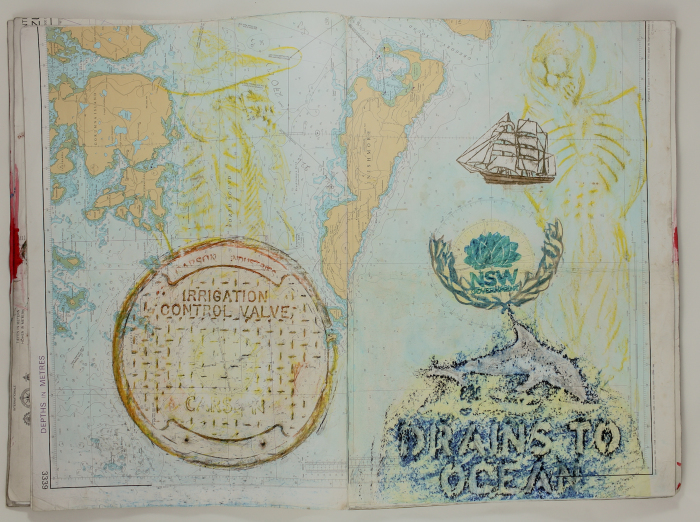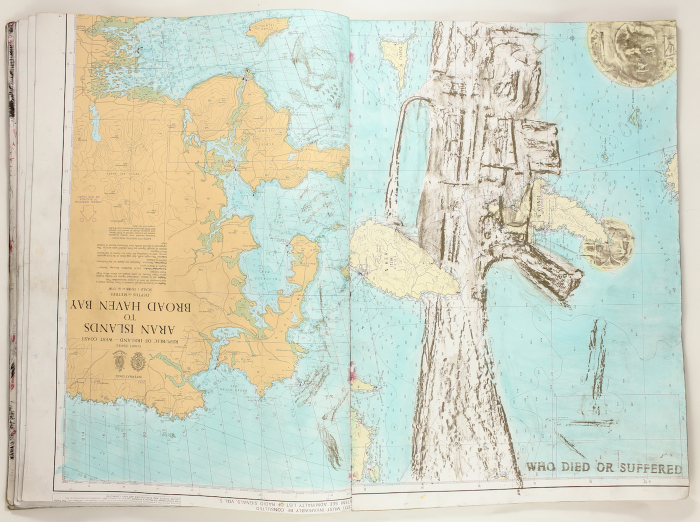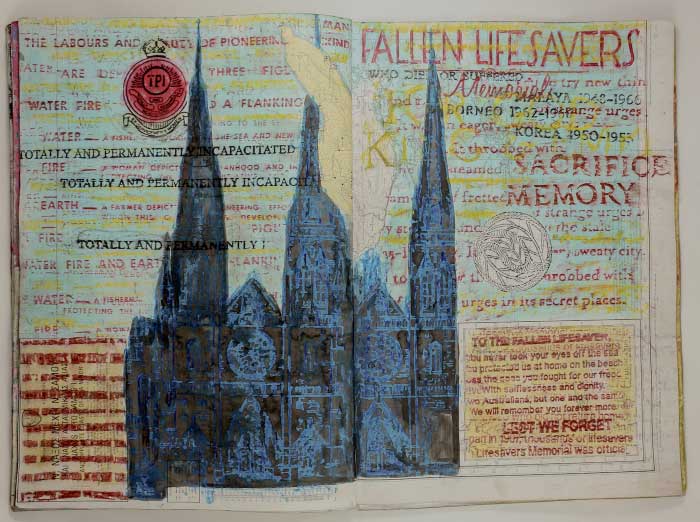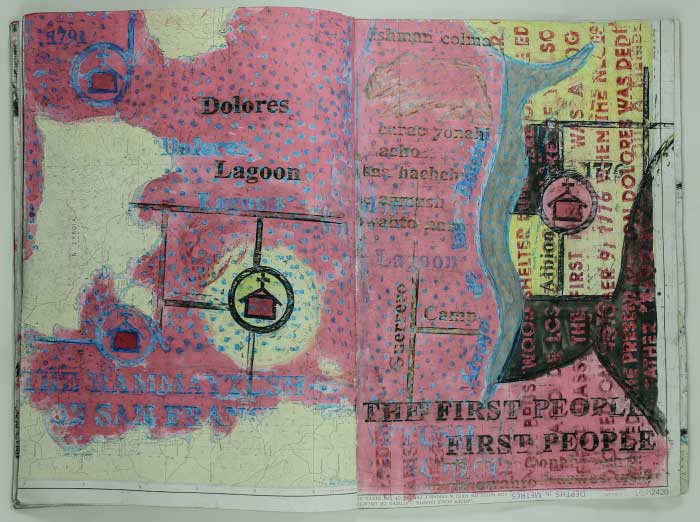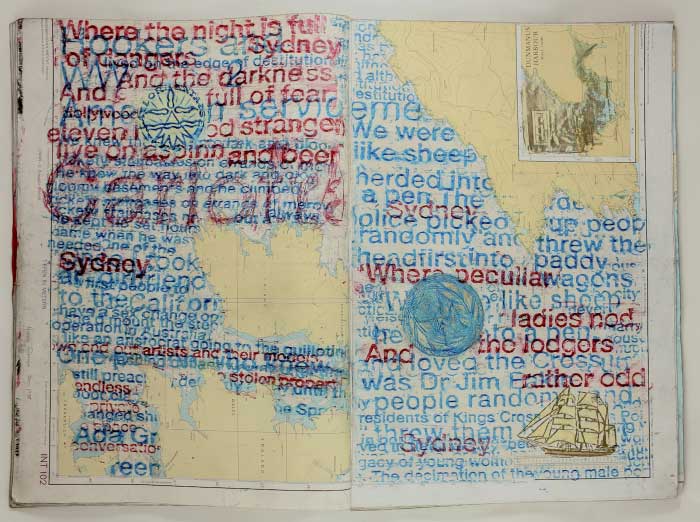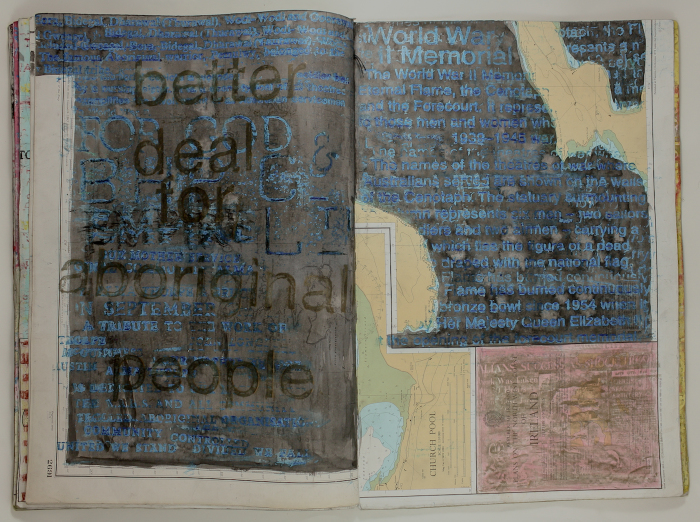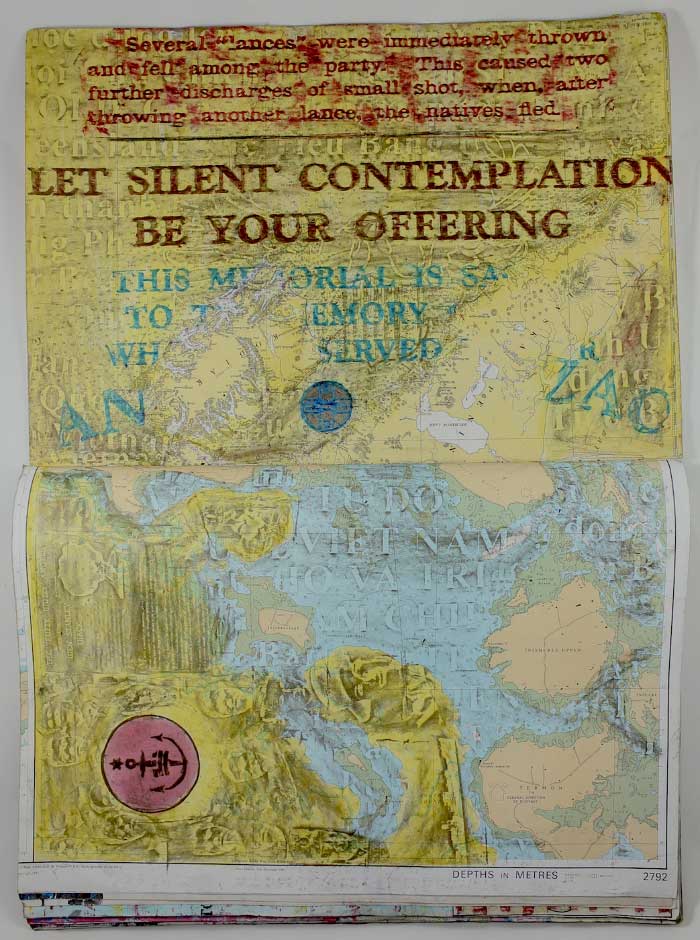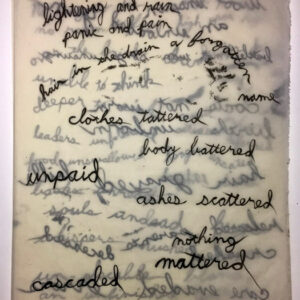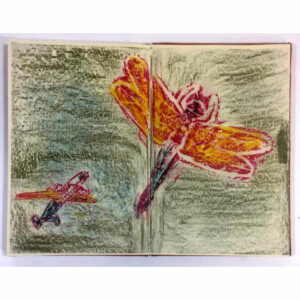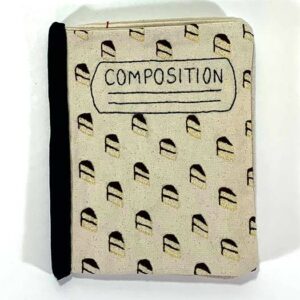Date
2015
Edition Size
unique
Media
Collage, Ink, Natural Pigments, Offset print, Rubbing, Wax
Binding
Hand-sewn
Format
Artist Book
Dimensions
20 × 13.5 × 1 in
Publisher
Organik
Collection
Unique Books$ 9,200.00
Unavailable
View Collectors
Boston Athenaeum
Book number 4 in a series of 8 multi-media one-of-a-kind collaged artists books, each a unique collaboration between Marshall Weber, and American and Australian collaborators.
The book is an Organik production. The media is wax rubbing, ink, and natural pigment painting collaged over found vintage, used, international nautical maps from the 1980s and 90s procured, collaged, and bound by Christopher Wilde and co-published with the Organik artists collaborative group (consisting of Kurt Allerslev, Weber, and Wilde).
The title of the book, Warra Warra Wai, is a phrase (roughly translated as “Go away”) from the Tharawal Australian Aboriginal language group. The phrase is recorded as being spoken to Captain James Cook and company by local Gweagal (also spelled Gwiyagal) clan members trying to prevent Cook from his first Australian landing on the Kurnell peninsula on Botany Bay near what is present-day Sydney. There are a number of plaques commemorating this initial conflict.
The plaque matrices for the rubbings were from historical markers and memorials in Brisbane, Melbourne, and Sydney, and in Los Angeles, New York, and San Francisco. The book uses a visual concrete poetry collage approach with a critical and emotional perspective on Australian Aboriginal and colonial history and its attendant memorials. Instructively, I have often heard both artists and activists in Australia say, “after they get rid of the people then they put up a plaque to commemorate them.”
The Ad Astra Australia project attempts to rescue and resuscitate these memorial tombstones that are walked over and forgotten along with the communities and historical moments whose obliteration they signify. The point is not just to make the public aware of the plaques but to critically recontextualize the heraldic verbiage and the military aesthetics of State and corporate powers. The goal is to contribute to the popular conversation which honors those dislocated communities while imagining a just and sustainable future for all.



